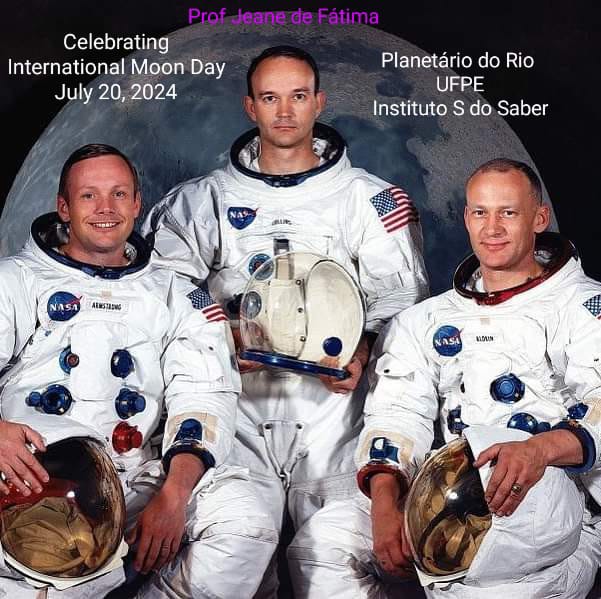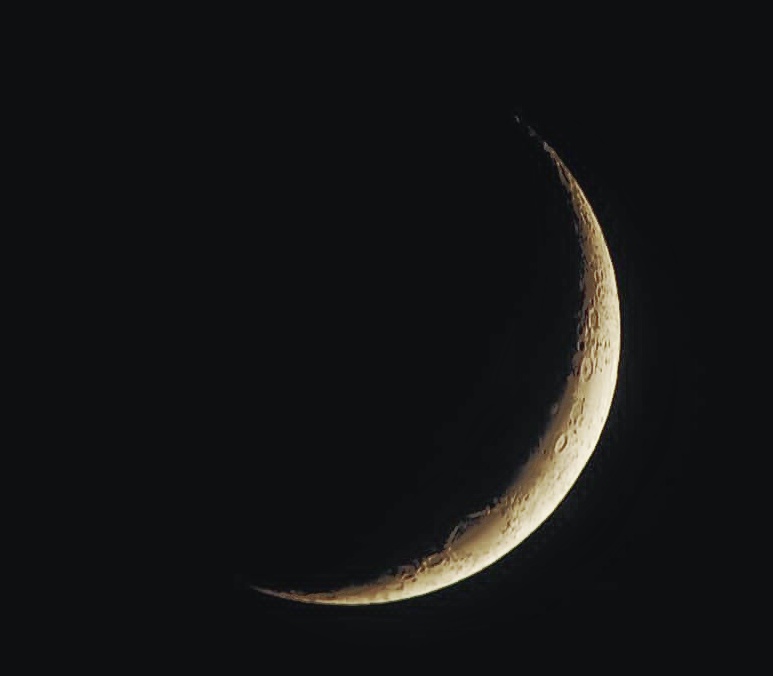- This event has passed.
Celebrating International Moon Day, the First Moon Landing, Friendship Day, and the Birth of Santos Dumont
July 20, 2024 @ 11:00 – 18:00 -03

Integrative Activity of “Fun Astronomy” Rio de Janeiro Planetarium
Master’s in Aerospace Engineering from UFPE – Prof. Jeane de Fatima Moreira Branco
Celebrating International Moon Day, First Moon Landing, Friendship Day, and Santos Dumont’s Birthday
Planetário do Rio
Date: July 20, 2024
Time: 11:00 AM to 6:00 PM
Fun and educational activities inspired by the characters of “Inside Out”, exploring the mysteries of space and the history of lunar missions.
Exploring Space Sounds Outdoor Area (Garden and Playground)
DART Mission and Samples from Asteroid Dimorphos (Golf Course)
Solar Clock and the Relationship Between Time and Light (Planetarium Solar Clocks)
Rocket Olympics (Garden and Playground)
Exploring Footprints on the Moon (Front of Planetarium)
Emotions and Planets with “Inside Out” (Indoor Spaceship)
Touching a Real Meteorite (Front of Planetarium)
History of Apollo 11 Mission and Eagle Spacecraft (2nd Floor Indoor Area)
Friendship Day Celebration with Moon Cookies (Front of Planetarium)
Dome Session – 15h
Menu: Educational Activities with Inside Out
- Exploring Space Sounds:
- Objective: Learn about the science of sound and explore space sounds interactively.
- Description: Fun activity where children will discover how sounds propagate in space and participate in auditory experiments.
- Location: Golf Course area.
- Characters: All characters from “Inside Out”.
- DART Mission – Asteroid Dimorphos:
- Objective: Represent the DART mission and understand how it collected samples from asteroid Dimorphos.
- Description: Children will explore a replica of the mission and participate in activities simulating sample collection.
- Location: Golf Course area.
- Exploring Time and Light with a Solar Clock:
- Objective: Understand how a solar clock works and explore the relationship between time and light.
- Description: Children will build and use solar clocks, learning basic astronomy principles.
- Location: Outdoor area of the Planetarium.
- Rocket Olympics:
- Objective: Explore the science and fun behind rocket building and launching.
- Description: Friendly competition where children will build rockets and participate in a launching Olympics.
- Location: Outdoor area of the Planetarium.
- Exploring Footprints on the Moon:
- Objective: Learn about the history and science of lunar exploration.
- Description: Interactive activity where children will explore simulated footprints in the sand and discuss the durability of lunar footprints.
- Location: Outdoor area of the Planetarium.
- Exploring Emotions and Planets:
- Objective: Relate emotions to different planets in the solar system.
- Description: Children will learn about the planets and associate each one with emotions from “Inside Out” characters.
- Location: Planetarium Spaceship.
- Touching a Real Meteorite:
- Objective: Explore emotions while touching a real meteorite and learn about its origin.
- Description: Children will have the opportunity to touch a real meteorite and express their emotions about the experience.
- Location: Front area and visit to the Planetarium exhibition.
- History of Apollo 11 Mission and Eagle Spacecraft:
- Objective: Learn about the Apollo 11 mission and the Eagle spacecraft.
- Description: Visit to the replica of the Eagle spacecraft with interactive activities to understand the Apollo 11 mission.
- Location: Second floor of the Planetarium.
- Creating Your Moon Cookie and Celebrating Friendship Day:
- Objectives: Stimulate creativity and collaboration among children.
- Teach about the Moon and the importance of friendship.
- Provide a fun and educational experience.
- Activity Description: Children will create their own moon cookies and then participate in a Friendship Day celebration.
- Location: Outdoor area of the Planetarium.
Fun Activities with “Inside Out” Planets
- Classifying the planets of the Solar System and beyond with the emotions of “Inside Out” characters:
- Joy (Jupiter): Represents joy and wonder, being the largest planet in the Solar System.
- Anger (Mars): Often called the “Red Planet” due to its color, associated with anger and passion.
- Disgust (Uranus): A distant, icy planet with a blue hue, evoking feelings of disgust.
- Sadness (Neptune): With its deep blue color, evokes feelings of melancholy and sadness due to its cold and isolated appearance.
- Fear (Pluto): A distant dwarf planet representing the unknown and mysterious, often evoking fear.
- Shame (Mercury): The smallest planet and closest to the Sun, symbolizes feelings of inadequacy or shame in comparison to larger planets.
- Envy (Venus): Often called Earth’s “twin” but covered in inhospitable acidic clouds, symbolizing envy for Earth’s habitability and beauty.
- Boredom (Ceres): The largest object in the asteroid belt, less distinctive, evoking feelings of boredom.
- Anxiety (Saturn): With its complex rings and moons, represents complexity and potential chaos, leading to anxiety.
- Nostalgia (Earth): Our home planet evokes feelings of nostalgia when contemplating space and the vastness of the universe.
Second floor indoor area of the Planetarium
The Lunar Module Eagle was the spacecraft used by NASA in the Apollo 11 mission, which took the first astronauts to the Moon in July 1969. Design and Construction: The Eagle Lunar Module was designed to be a compact, functional spacecraft capable of landing and taking off from the lunar surface. desempenhou took crucial role in meeting the played the way back to Earth. Armstrong became the played lead from exactly Armstrong made landings and Module Descent, played crucial role that led history to humanity.
Brief Event Description
Celebrating International Moon Day, the First Moon Landing, Friendship Day, and the Birth of Santos Dumont
Exploring the Sounds of Space
Location: Planetário do Rio
Activity: Sound reverberation stimulating the senses
Description: Children will be taken to a special acoustic space where sound reverberates. Here, they will explore how different sounds behave in this environment, perceiving reverberation and the sensations each sound causes. Using posters of characters from “Inside Out,” the activity will stimulate the children’s senses by associating sounds with the emotions represented by the characters.
DART Mission and Samples from the Dimorphos Asteroid
Location: Planetarium – Planetary Defender Area
Activity: DART Mission Simulation
Description: In this activity, children will learn about the DART (Double Asteroid Redirection Test) mission, which collected samples from the Dimorphos asteroid. Using recycled materials, they will create models of asteroids and simulate sample collection, understanding the importance of planetary defense.
Sundial and the Relationship Between Time and Light
Location: Outdoor Area
Activity: Construction of a Sundial and a Lunar Sundial
Description: Children will participate in building two sundials: one flat and the other inclined on a cube measuring 39×43 cm. Using a large ball to represent the Moon, they will highlight the Sea of Tranquility. They will learn how time and light interact and how the shadow of the sundial changes throughout the day.
Rocket Olympics
Location: Outdoor Area
Activity: Blow Rockets and Saturn V Launch
Description: In a fun and competitive activity, children will build and launch blow rockets, competing to see who can achieve the greatest distance. There will also be a demonstration of the Saturn V rocket launch model, explaining its historical importance.
Exploring Footprints on the Moon
Location: Outdoor Area
Activity: Footprint representation in sand
Description: Children will use sand to create representations of the footprints left by astronauts on the Moon. They will discuss whether these footprints are still there and why, using the characters from “Inside Out” to explore emotions and reflections on this historical event.
Emotions and Planets with “Inside Out”
Location: Planetarium
Activity: Characterizing planets according to emotions
Description: Using the characters from the movie “Inside Out,” children will characterize different planets in the solar system according to emotions: Joy, Anger, Disgust, Sadness, Fear, Shame, Envy, Boredom, Anxiety, and Nostalgia. This activity will help connect astronomical concepts with the children’s emotional world.
Touching a Real Meteorite
Location: Planetarium – Exhibition
Activity: Interactive exhibition
Description: Children will have the opportunity to touch a real meteorite exhibited inside the Planetarium. This tactile experience will be accompanied by explanations about the origin and composition of meteorites.
History of the Apollo 11 Mission and the Eagle Lander
Location: Planetarium – Eagle Exhibition
Activity: Selfie with the Eagle replica and the three astronauts
Description: Children will learn about the historic Apollo 11 mission and can take selfies with the replica of the Eagle lander and figures of the three astronauts: Neil Armstrong, Buzz Aldrin, and Michael Collins. This will be an opportunity to explore the significance of this space achievement.
Celebrating Friendship Day with Moon Cookies
Location: Planetarium
Activity: Working with lunar phases and their representations
Description: During the Friendship Day celebration, children will make Moon-shaped cookies, representing the different lunar phases. This activity will be a fun way to learn about the lunar cycle while celebrating friendship.
Dome Session
Location: Planetarium Dome
Activity: Observing the Moon and learning about Indigenous constellations
Description: Concluding the program, children will participate in a dome session where they will observe the Moon and learn about Indigenous constellations, expanding their knowledge of astronomy and the different cultures that observe the sky.
This program aims to provide an educational and enjoyable experience, using playful and interactive activities to teach children scientific and astronomical concepts.
This event can impact the public by engaging them in a multifaceted exploration of space and emotions through interactive and educational activities.
By integrating themes from the movie “Inside Out” into astronomical concepts and historical events like the Apollo 11 mission, attendees can connect emotionally with scientific topics in a playful and memorable way. Activities such as exploring lunar footprints, touching a real meteorite, and participating in rocket Olympics foster curiosity and learning. Moreover, creating a sense of wonder and connection to space exploration can inspire future generations to pursue interests in science, technology, engineering, and mathematics (STEM). Thus, the event aims to not only educate but also ignite a passion for space and emotional awareness among participants.
This event can impact the public in several ways:
Educational Enrichment: It provides educational opportunities for learning about space, astronomy, and scientific discoveries related to the Moon, inspiring a deeper understanding of these topics.
Inspiration and Engagement: By offering interactive and hands-on activities, the event can inspire curiosity and engagement among participants, encouraging them to explore STEM fields and pursue interests in space exploration.
Community Building: It fosters a sense of community by bringing together people of all ages to celebrate scientific milestones and cultural events related to space exploration, promoting a shared enthusiasm for learning.
Environmental Awareness: Emphasizing the use of recycled materials and sustainable practices in activities raises awareness about environmental issues and promotes eco-friendly behaviors.
Cultural Appreciation: By celebrating International Moon Day and other related events, the event promotes cultural appreciation of space exploration achievements and their impact on society.
The relevance of this event to the country lies in its capacity to promote STEM education, cultural appreciation, and emotional intelligence among younger generations. By using themes from “Inside Out” to explore space and historical achievements like the Apollo 11 mission, the event fosters a deeper understanding of scientific concepts and historical significance. This approach not only enhances educational outcomes but also cultivates a sense of national pride in Brazil’s contributions to space exploration. Furthermore, by engaging children in interactive and creative activities, the event aims to inspire future scientists, engineers, and innovators, thereby contributing to the country’s long-term technological advancement and educational excellence.
This event holds great significance for our country for several reasons:
Educational Advancement: It promotes STEM education and scientific literacy among children and youth, fostering future generations of scientists, engineers, and innovators.
National Pride: Celebrating milestones like the AEB’s 30th anniversary on February 14th highlights Brazil’s achievements in space exploration and technological advancements.
Cultural Enrichment: By integrating cultural elements and celebrating international events like International Moon Day, the event enriches our cultural understanding and appreciation of space exploration.
Environmental Consciousness: Emphasizing sustainable practices and the use of recycled materials in activities promotes environmental awareness and encourages eco-friendly behaviors.
Community Engagement: It brings together families and communities to participate in educational and celebratory activities, fostering unity and a shared enthusiasm for scientific exploration.
Master’s in Aerospace Engineering from UFPE – Prof. Jeane de Fatima Moreira Branco

